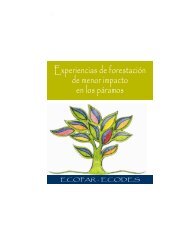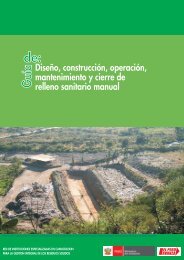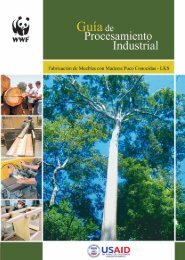Create successful ePaper yourself
Turn your PDF publications into a flip-book with our unique Google optimized e-Paper software.
1904.] Bandelier, Ancient Peruvian Burials. 22 1<br />
Aside from the work of Arriaga and of what Father Terhuel<br />
recorded in his (as yet but imperfectly known) MSS.,<br />
entitled Contra Jdolatriam, the Litterc Annuce of the Jesuits<br />
convey important information. The Annuce Littere Anni<br />
16I3 describes a "Mission" among the indians of central<br />
Peru, in the course of which was discovered that "one of<br />
their principal Gods were the bodies of their deceased ancestors<br />
which they disinterred from the churches on All Souls'<br />
day and other days, in the absence of the Father their Curate,<br />
with great secrecy, and carried them to the clefts and heights<br />
where they placed them sitting and made great festivals for<br />
three days and nights without sleep (of which they were very<br />
particular) and among other ceremonies there were dances<br />
with much drunkenness, and finally they would depart, leaving<br />
them food and drink." I<br />
The Report on the Missions of the Huachos and Yauyos from<br />
the same year is still more explicit. The eighth commandment<br />
which the medicine-men are said to have given the<br />
indians was: 2 "That they should bury their dead in the<br />
Recueil de documents et MOmoires originaux sur i'Histoire des possessions espagnoles dans<br />
l'Am4rique. (I840.) Work in Huamachuco began in I555 about; Relacion (page ii.).<br />
The missionaries sent there and who secured most of the information conveyed by the<br />
document above. were Fray Juan de San Pedro and Fray Juan del Canto.<br />
' Annuc Litteras Anni 1613 Collegii Guamangani. (MSS. from the National Library<br />
of Lima.) "pero vno de sus mas principales dioses eran los cuierpos muertos de sus<br />
antepasados los quales desenterraban de las Yglesias el dia de todos Slos y otros dias<br />
ei ausencia del Pe cura con gran secreto y los llebaban a las qttebradas y cerros donde<br />
los ponian sentados y alli hasian grandes fiestas por tres dias con sus noches, sin dormir<br />
(PS. lo qual hazian gran diliga) y entre otras fiestas auia bayles y danzas con muchas<br />
vorracheras y al fin se despedian dellos dexAndolos de comer y veber." - The Jesuit College<br />
of Guamanga was founded after I586.<br />
2 Misiones de las Prouincias de los Huachos y Yauios (MSS. of the Nat. Library of<br />
Lima, fol. 2.) " El 8° qe entierren 4 sus difuntos en los sepulchros de sus antepassados<br />
que era en los cerros principalmte los curis de Santiago y qe los Adoren y hagan los<br />
mesmos sacrificios qe a los huacos, ofreciendolos coca sauco quepo mulla y paria y qe<br />
cada afio les muden las ropas qe era el dia de los finados y este dia les lleuen comida y<br />
de beber, y qe saquen y desentierren de las iglesias los cuerpos de los difuntos y qe sino<br />
pudieren en la yglesia les hagan las ceremonias posibles." It may not be devoid of<br />
interest to state, as far as possible, what the ceremonial objects above enumerated were.<br />
In this respect the Exortacion furnishes data, (folio 45.)<br />
Coca: the leaves, in general use among mountain indians, especially for witchcraft.<br />
I do not translate the spanish text.<br />
Sauco: Parpa or Saucu is a ball they make of cornmeal and keep it for sacrifices.<br />
Such balls of meal are used to-day among the Aymara. Coca leaves, in the shape of<br />
a trefoil, are pult inside of the paste."<br />
Quepo: A thistle. Torres Rubio. Arte y Vocabutlario (fol. io8).<br />
Mulla. - Should be Mullu (fol. 45). " Is a conch-shell of the sea, thick, and all have<br />
pieces of these shells; also they make beads out of this Mullu and put them on the<br />
Huacas, and of these beads they also use in their confessions." The Mullu is in general<br />
use to-day among the Aymara indians. Only, as they are far from the ocean, white<br />
stones replace the shells. Alabaster is the material mostly employed for the confection<br />
of the various images that serve for their innumerable sorceries.<br />
Paria. -" Powder of a red color, like vermillion, which they bring from the mines<br />
of Guancauelica, which is the metal from which they draw the quicksilver, although it<br />
rather resembles minium." Ground cinaber ore.








